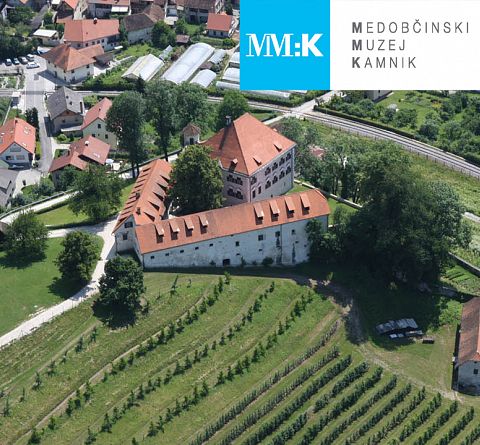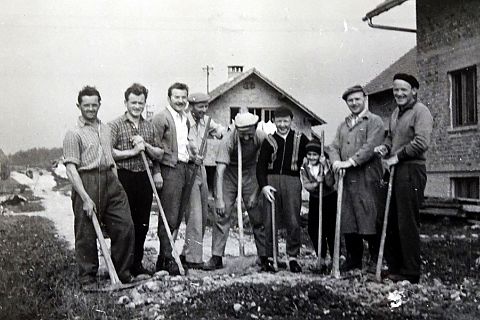How Prvomajska Street in Kamnik was created
At the end of the 1950s, there was a shift from the paradigm of magnificent working and poor living spaces to a new one: in addition to a pleasant working environment, communities tried to provide decent housing in a family setting for every worker. Companies began constructing residential neighborhoods – blocks, duplexes, and four-apartment living units. If you didn’t choose to rent an apartment, you could get a favorable loan to build an individual house. In the following, we will summarize the story of the development of a neighborhood between Kamnik and Duplica, on what would become Prvomajska Street. The story was shared by Mrs. Jelka Otrin.
Between Kamnik and Duplica, fields and meadows with hayracks spread out after World War II. Jelka’s parents, Gregor and Francka Kotnik from Lukovica, got employed in the nearby Stol factory. In 1955, they began obtaining permits to build a house, and in the same year, they received an order allowing the construction of workers’ and employees’ residential houses on land owned by the General People’s Property managed by LOMO Kamnik. Construction could begin. From the stories and photographs of Jelka’s grandfather France Cerar, we can understand how different a task building a house was back then. They worked in their free time, practically every day and every weekend. Friends, relatives, and coworkers volunteered to help. All work was done manually with simple tools. They first built a wooden shed to store tools and materials. If the work dragged on, they even used the shed to sleep. The plot had no water or electricity, so they initially transported water from the Kamniška Bistrica river to the plot with a horse-drawn carriage. Later, Jelka’s father dug an eleven-meter-deep well, which provided water for future builders of houses on Prvomajska Street. They also carried stone and sand from the river with horses and wood from Lukovica for the house. This process could be very slow, as the driver made stops at every tavern along the way. They had snacks at the Stol factory canteen in Duplici, where they could use their food vouchers.
In December 1958, the Kotnik family moved into their new home, which was not completely finished. Over the next few years, it took on an increasingly beautiful appearance. Soon, the first neighbors arrived from different places: from Palovče, Moravče, the Tuhinj Valley, as well as from Dolenjska and Primorska. They were very connected and helped each other, socializing as well. Their self-sufficiency was ensured by vegetable gardens next to the houses and mutual exchange of produce between neighbors. Prvomajska Street had 14 houses and 63 residents. Neighborhood support continued even as car ownership increased, extending to garage construction.
Jelka Otrin wrote: “We grew up in a street with a gravel road, the houses had no fences, and our games and gatherings took place sometimes at one neighbor’s, sometimes at another’s. Many of these moments are recorded in photographs and films.”
Five of the original settlers still live on the street, and four of them have reached the remarkable age of ninety. Their descendants, despite the paved road and fences around houses, remain connected. The rhythm of the street continues in the modern era, though in different ways than before.
Marko Kumer




